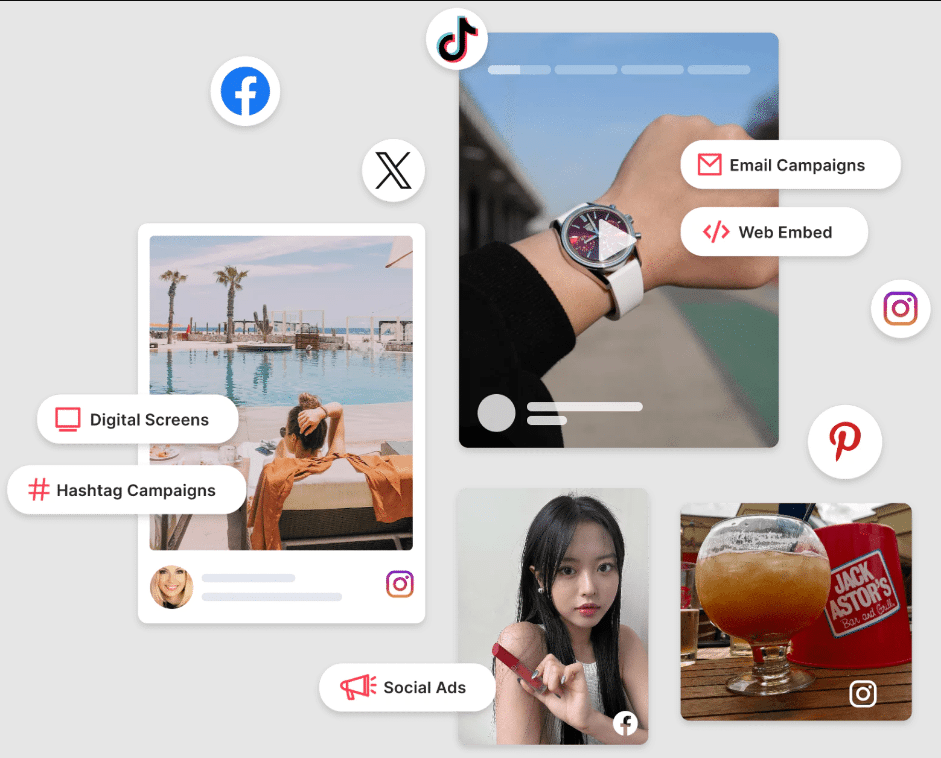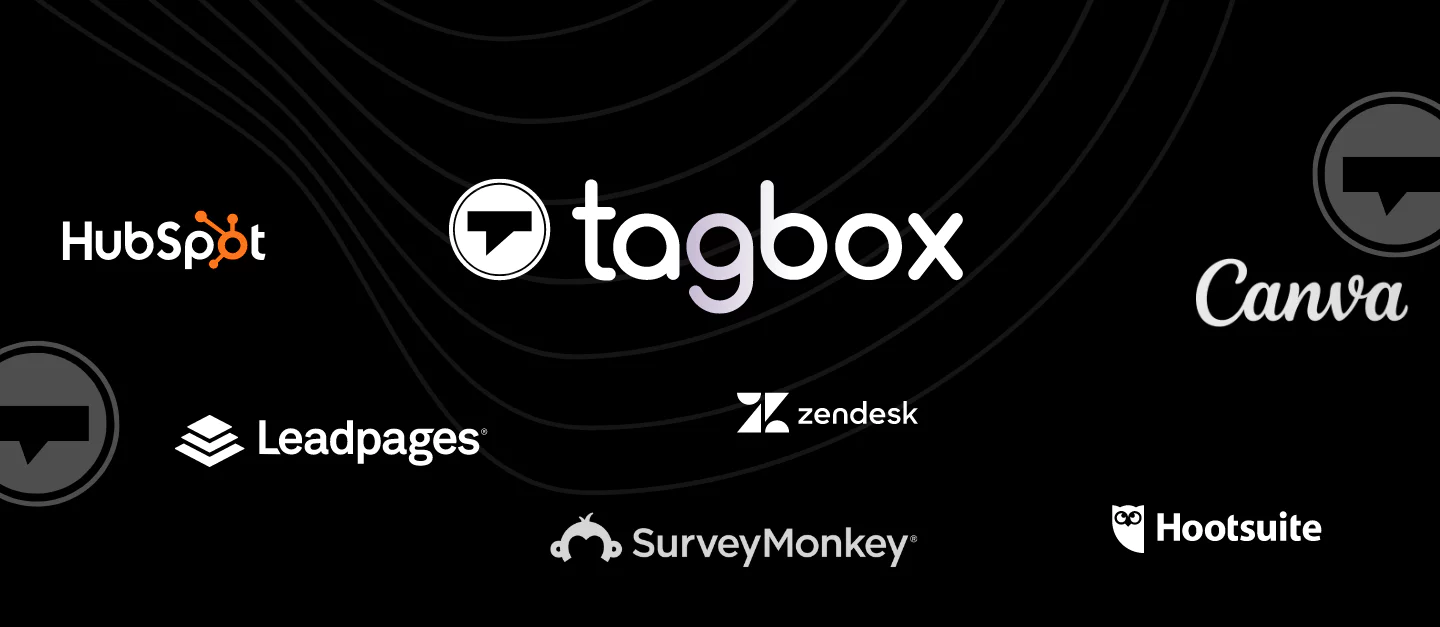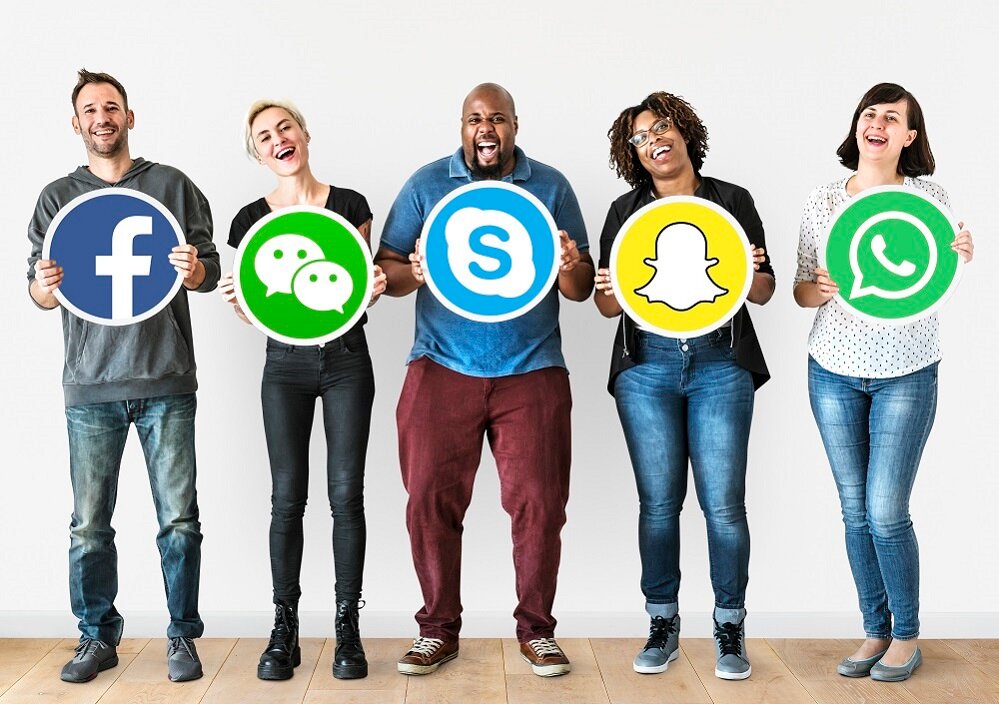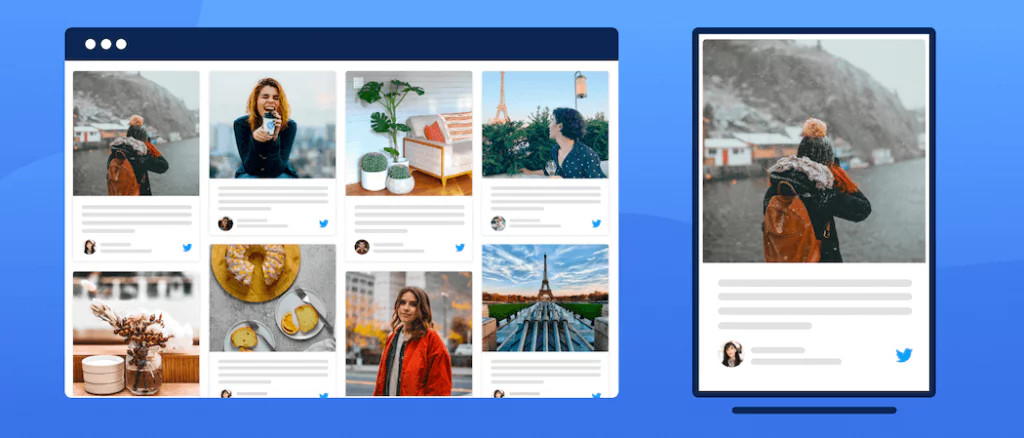Read summarized version with
Creating and distributing content requires a lot of investment. If you want to promote your social media account, you need a content department in your organization. At a minimum, you’ll need to hire a copywriter, SMM manager, designer, and targeting specialist. On top of that, if you decide to launch email newsletters, you will need additional specialists, increasing the marketing budget.
Many entrepreneurs make mistakes at this stage. They either start creating content independently or overload their employees with tasks. Such attempts to save some money on promotion lead to loss of personal time, lower quality of content, and staff leaving.
Another way to reduce content production costs is to motivate customers to create and share content on social networks, promoting your company’s goods and services for free. This guide will show how UGC outperforms traditional advertising regarding effectiveness and costs.
What is UGC?
UGC (user-generated content) is any information-rich content from a user. Such content can be a photo, review, comment, video, audio, etc. With the proper use of UGC on a company’s website, consumer’s confidence and interest increase.
One of the main forms of UGC is user reviews and ratings. This content is essential when selling products and services.
All major e-commerce websites with a large assortment of products have a form for feedback under each product card and the ability to rate the product or service. This data makes learning about the consumer’s preferences and offering a relevant product possible.
User-generated content is so important because:
- It helps to blur the line between the real world and the virtual world
- Visual content helps to understand how products and services look like
- It helps people evaluate the quality and reliability of products
Social media helps in creating UGC. Users can communicate on a brand account by leaving comments, sharing opinions, participating in polls, tagging accounts, and more. UGC opportunities increase a website’s conversion rate by more than 10%.
Let`s take the assignment writing domain as an example. There are a lot of students who turn to thesis writing services. It is a great idea to ask them to leave short-form video reviews or at least text reviews on their social media accounts. This way, thesis writing companies can build trust with their subscribers by showing other clients positive experiences. As a result, UGC increases their conversion rates.
Boost Your Marketing Efforts with UGC
How can UGC affect your business?
UGC content is an effective tool for increasing sales. Many people take a long time to make a purchase decision until they are sure that a product offers many benefits. User-generated content in the form of testimonials and reviews can motivate hesitant customers to buy a product or service.
UGC helps to increase repeat sales. You can ask a customer to share a success story, publish UGC on your platforms, and ask subscribers to support the person with likes and comments.
As a result, the customer gets a portion of attention and social approval. And that’s why he or she is highly likely to make a repeat purchase to experience the same pleasant emotions again.
Custom content increases viral reach and attracts new potential customers. If you start mentioning subscribers in posts, people will be more willing to share such posts. More reposts, more reach, more likely to attract a new target audience.
You can collect UGC on social media, your website, and external platforms. If you promote your company’s profile in Google My Business, ask your customers to leave reviews there regularly. The more ratings you get, the higher your company profile will be ranked in the results. This can attract more potential customers from search engines.
Collect UGC from Any Social Media Platform
What is Traditional Marketing?
Traditional marketing simply entails any kind of marketing existing before the introduction of the Internet.
The strategies are targeted toward the readers of print media such as magazines and newspapers.
Readers may get long advertisement spreads on several pages, small ads incorporated into the book’s primary message or some other kind of promotion.
The other ones are advertisements on the radio and television. Brands also rely on techniques like direct mail services, telephone marketing, and outdoor marketing (billboards/signage). They strive to reach out to their market groups.

Difference Between UGC vs Traditional Marketing
| Feature | User-Generated Content (UGC) | Traditional Marketing |
| Source | Created by consumers, users, or fans | Created and controlled by the brand or its marketing team |
| Authenticity | Often perceived as more authentic and genuine due to user involvement | Controlled and crafted by the brand may be perceived as less authentic |
| Trust | It tends to be more trusted as it comes from real users and experiences | Relies on the reputation and authority of the brand |
| Cost | Typically, lower cost as content is created by users for free or incentivized | It can be expensive, involving costs for advertising, agencies, and production |
| Reach | Has the potential for wider organic reach through social sharing and engagement | Reach depends on the budget and media channels chosen by the brand |
| Engagement | Encourages active participation and engagement from the audience | Engagement is often a one-way communication from the brand to the audience |
| Credibility | Relies on the credibility of user experiences and peer recommendations | Relies on the credibility and reputation of the brand |
| Feedback Loop | Provides immediate feedback from the audience, allowing for quick adjustments | Feedback may take time to gather and may be limited |
5 Compelling UGC Stats that Outrank Traditional Marketing
Brands have unraveled a profound truth— their followers serve as unparalleled billboards, transcending industries from eCommerce giants to your favorite local food truck or cozy cafe. These five statistics demonstrate the incredible benefits of UGC for your business.
#1: User-Generated Photos are 5x More Likely to Convert
User-generated images champion customer conversion, outshining their “professional” or non-UGC counterparts.
According to some research, users exhibit a staggering fivefold increase in the likelihood of purchasing after engaging with a User-generated photo.
They selected 18 top-performing brands leveraging their platform. Then, they identified up to 20 paramount images for each brand, gauging their performance based on the estimated revenue they’ve driven online.
This meticulous curation resulted in a robust dataset comprising 343 images. UGC notches an average of 85.09% conversions, dwarfing professional content’s modest 17.19%.
The psychology behind it is profound. UGC nurtures trust and confidence, dismantling critical barriers in the online shopping journey.
Why does UGC outshine the rest? UGC enables brands to promote products organically, sidestepping the pitfall of appearing overly aggressive or sales-centric.
The beauty of UGC is that it can be used beyond the confines of a social feed, too. For example, check out how Brownie implements a lookbook of UGC on-site to show off its products and satisfied customers.

#2: 69% of Adults Claim to Upload Selfies to Social Media (Including 87% of Millennials)
A self-captured portrait is stalwart in the User-Generated Content (UGC) domain. Statista states that in 2018, 69% of adults enthusiastically embraced the selfie trend, with 87% of millennials jumping on the bandwagon. And this trend has stayed the same.
At first glance, you might wonder, “What’s the big deal? People take selfies, so what?” Yet, the significance lies in that almost 3/4 of all social users are already generating UGC through selfies.
There are three reasons for this:
- Instant gratification. Selfies are a swift creation and posting process—click, filter, upload, done.
- Authenticity reigns. They embody truly organic, unique content, steering clear of the conventional sales pitch.
- Person-centric approach. Selfies focus on the individual as the subject, transcending the sole promotion of a product.
Before dismissing selfies as a mere trend, consider how savvy marketers leverage this cultural phenomenon. Take GoPro, a brand that seamlessly capitalizes on the selfie craze.
GoPro’s Instagram not only showcases jaw-dropping User-Generated selfies but also amplifies the brilliance of their cameras in real-life action.
These selfies do more than document moments; they embody the spirit of adventure, crafting a narrative that resonates with GoPro’s customers.

#3: 47% of the Top-Performing Content Marketing Teams Rely Extensively on UGC
It’s time to shift focus because the biggest leaders in content marketing are diving headfirst into the world of user-generated content (UGC). 42% of marketing professionals say UGC is a vital component of their strategy. And the momentum is only gaining steam.
Just take a glance at the most influential brands on Instagram, Facebook, and Twitter, and a common thread emerges:
- Sharing the love. They willingly share their followers’ content, transforming fans into collaborators.
- Engagement matter. An eagerness to engage with customer comments and feedback, creating a dynamic, two-way conversation.
- Personality prevails. Infusing a sense of personality that bridges the gap, forging a deeper connection with followers.
For those skeptical about the scalability of such practices, consider this: brands with millions of social followers routinely express appreciation through retweets. So, the path is clear for brands with more modest followings—show your audience some love.
Enable the Power of UGC for Your Brand with Taggbox
#4: UGC Can Significantly Improve Conversion Rates
All brands have the potential to harvest the rewards of User Generated Content (UGC). However, specific industries and niches have emerged as frontrunners, reaping higher conversion benefits through UGC’s authentic engagement.
Research reveals that UGC has the most substantial impact on conversion rates in the following industries:
- Apparel & Accessories – +4.3%
- Health and Beauty – +4.67%
- Electronics – +2.11%
- Home & Garden – +3.49%
Some niches are inherently more predisposed to direct sales via social media, given their products’ tangible and visual nature.
#5: By 2027, Over 50% of Commercial Content will be Created Outside Marketing
Consumers are poised to surpass marketers in content creation. This evolution signifies a profound change where brands relinquish their marketing reins, placing the spotlight on their fans and followers.
The landscape of traditional commercial video content is undergoing a seismic shift. What once held undeniable traction is now met with resistance, particularly from the millennial demographic, who harbor a strong aversion to overt selling. Simultaneously, the global surge in ad-block usage has reached unprecedented levels.
The key takeaway is clear: brands must pivot towards user-generated content (UGC) rather than hold out for a miraculous resurgence of paid and native advertising beyond social media. The signs suggest that such a revival is unlikely.
Enterprising brands are steering away from pouring resources into ads. Instead, they’re embracing innovative UGC strategies such as hashtags, giveaways, and contests to spark excitement among their fan base.
45Hot Topic’s “#AniMay” hashtag campaign is a prime example, a brilliant fusion of rewarding followers and showcasing their most popular products.
Leverage the Power of UGC with Taggbox
Conclusion
Custom content can help you cut down on production costs. Why spend a lot of time searching for trending topics when customers suggest what they are interested in and concerned about? Use subscribers’ ideas in your content planning, and don’t forget to thank them for their suggestions.










